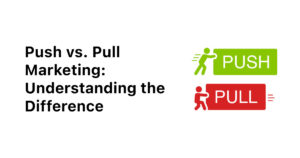Understanding the Four Pillars of SEO: Technical SEO, On-Page SEO, Off-Page SEO, and Content
In the ever-evolving digital landscape, Search Engine Optimization (SEO) remains a crucial strategy for enhancing a website’s visibility on search…

In the ever-evolving digital landscape, Search Engine Optimization (SEO) remains a crucial strategy for enhancing a website’s visibility on search engine results pages (SERPs).
Effective SEO is not a one-dimensional effort; it involves multiple components working in harmony.
Let’s explore the four key components of SEO:
- Technical SEO
- On-Page SEO
- Off-Page SEO
- Content.
Technical SEO
Technical SEO focuses on optimizing the infrastructure of a website to ensure it meets the technical requirements of modern search engines.
This foundational aspect of SEO ensures that search engines can crawl and index your site efficiently. Here are the critical elements of Technical SEO:
- Website Speed: A fast-loading site enhances user experience and can positively impact your rankings. Optimizing images, leveraging browser caching, and minimizing code are some ways to improve site speed.
- Mobile-Friendliness: With a significant portion of web traffic coming from mobile devices, ensuring your site is mobile-friendly is essential. This means having a responsive design that works seamlessly on smartphones and tablets.
- Crawlability: Make it easy for search engine bots to crawl your site. This involves creating a clear site structure, using a sitemap, and ensuring that your robots.txt file is correctly configured.
- Site Architecture: A logical and easy-to-navigate site structure helps both users and search engines. Clear hierarchies and well-organized categories are key.
- SSL/HTTPS: Security is a ranking factor. Ensuring your site is secure with HTTPS not only builds trust with users but also meets search engine guidelines.
On-Page SEO
On-Page SEO involves optimizing individual web pages to rank higher and earn more relevant traffic.
It is about making your website appealing both to users and search engines. Key aspects include:
- Title Tags: Craft compelling and relevant titles for each page, incorporating target keywords naturally.
- Meta Descriptions: Write concise and informative meta descriptions that entice users to click through to your site.
- Header Tags (H1, H2, etc.): Use headers to structure your content, making it easier for search engines to understand and for users to read.
- URL Structure: Create SEO-friendly URLs that are short, descriptive, and include keywords where appropriate.
- Image Optimization: Use alt tags to describe images and compress them to improve load times without sacrificing quality.
- Keyword Optimization: Strategically place keywords throughout your content, including in headings, subheadings, and body text, without keyword stuffing.
Off-Page SEO
- Off-Page SEO refers to actions taken outside of your own website to impact your rankings within search engine results pages. It is about building your site’s reputation and authority. Key components include:
- Backlinks: Earning high-quality backlinks from reputable sites signals to search engines that your site is trustworthy and authoritative.
- Social Signals: Engagements on social media platforms, such as shares, likes, and comments, can indirectly influence your SEO by driving traffic and increasing visibility.
- Guest Blogging: Writing articles for other reputable websites can help you earn backlinks and reach a broader audience.
- Influencer Outreach: Collaborating with influencers to gain mentions and backlinks can significantly boost your site’s authority.
- Online Reviews and Ratings: Positive reviews and ratings can enhance your online reputation and influence local search rankings.
Content
Content is at the heart of SEO. Creating valuable, relevant, and consistent content is essential for attracting and retaining a clearly defined audience. Key elements include:
- Content Quality: Produce high-quality, informative, and engaging content that provides real value to your audience.
- Keyword Research: Identify and use keywords that your target audience is searching for to guide your content creation.
- Content Variety: Utilize different types of content, such as blogs, videos, infographics, and podcasts, to keep your audience engaged.
- Content Freshness: Regularly update and add new content to your site to keep it relevant and interesting.
- User Intent: Understand and address the needs and questions of your audience, creating content that satisfies their search intent.
- Internal Linking: Create a logical link structure within your content to guide users and search engines, improving navigation and relevance.
Conclusion
Each component of SEO plays a vital role in the overall strategy to improve a website’s visibility, usability, and credibility on the web.
By focusing on Technical SEO, On-Page SEO, Off-Page SEO, and high-quality Content, you can create a well-rounded approach that enhances your site’s performance and drives organic traffic.
Remember, SEO is an ongoing process that requires continuous optimization and adaptation to the latest trends and algorithm updates.


